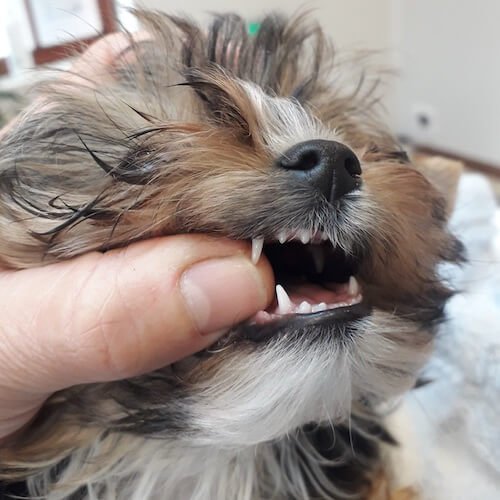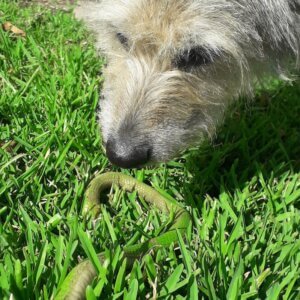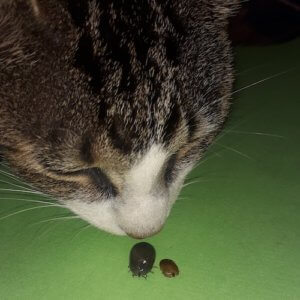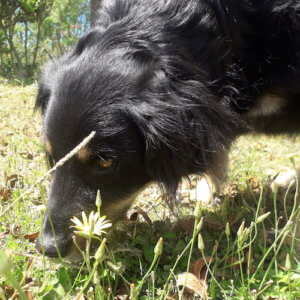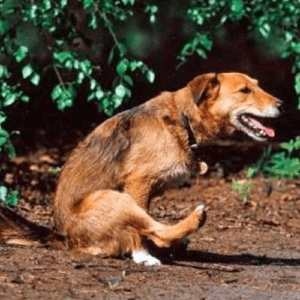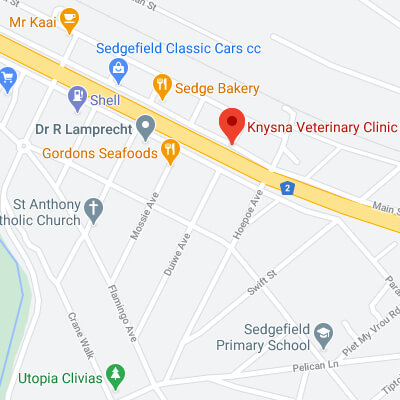Oh, how they love to sink those teeny tiny, razor sharp teeth into your soft fingers! Why do kittens’ and puppies’ teeth have to be so sharp?!
Well, these sharp teeth make up for the fact that baby jaws aren’t as strong as adult jaws. The sharpness of the teeth helps with shearing and tearing at food, and with the weaning process (ouch!).
In this post you are going to find out:
- when a pet’s baby teeth first appear,
- what can go wrong with them,
- what to avoid,
- and how to tell when intervention is necessary.
We’re also going to share some handy tips for avoiding problems!
When do baby teeth appear?
Dogs and cats are born toothless. By 3 weeks of age their baby teeth, or deciduous teeth, start erupting. The tooth eruption process begins when specialized cells called osteoclasts resorb (or eat away at) the alveolar bone that contains the tooth sockets. This forms a pathway for the tooth to exit from the jaw.
By the age of 6 to 8 weeks, kittens have 26 needle-sharp teeth and puppies have 28 shiny, knife-edged gnashers – beware! At 12 weeks of age cats and dogs start to exchange their baby teeth for adult ones. Dogs end up with 42, while cats get 30.

What can go wrong?
Here are some potential problems to look out for in your baby dog or cat’s teeth.
1. Delayed eruption of a deciduous tooth
Delayed eruption happens when baby teeth get trapped by bone or gum tissue. Embedded teeth appear as painful cysts or fluid filled oral masses on the gums. These can be surprisingly destructive! As the cysts expand, they cause severe local destruction of teeth, periodontal tissues and bone, and can even lead to jaw fractures. The earlier this condition is diagnosed and treated, the better the chances of avoiding localized damage.
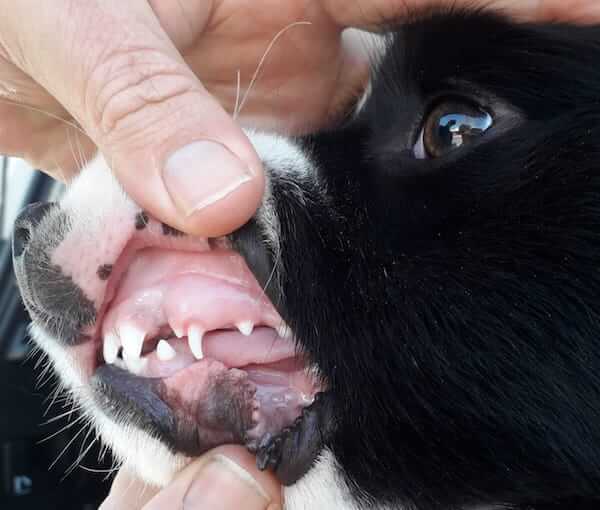
2. Retained deciduous teeth
As permanent teeth develop under the gum, the long, thin roots of the baby teeth are reabsorbed into a pet’s jaw. If this process does not take place, the baby tooth won’t fall out. Instead, the permanent tooth will erupt in the same place, causing the two teeth to vie for the same space. The permanent tooth won’t sit in the correct position and the retained deciduous tooth will need to be extracted surgically, with much care, so that the delicate root doesn’t break and the new, permanent tooth isn’t damaged.
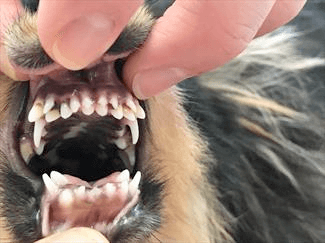
Image: https://veterinarypartner.vin.com
3. Fractures
Baby teeth can fracture when a puppy or kitten chews on the wrong stuff, plays too roughly, gets into a fight with another pet, or gets involved in any accident, really! Once the tooth pulp is exposed, the tooth can become painfully infected and die. This tooth needs to be extracted.
4. Jaw malalignment
Jaw malalignment can occur in both baby and adult pets. This can negatively affect your pup or kitten’s bite and tooth development.
The most common jaw malalignments are:
- An overbite, overshot jaw, or “parrot mouth” is where the lower jaw is too short.
- An underbite, undershot jaw, or “fish mouth” is where the lower jaw is too long.
If the malalignment is severe, surgery can be done on baby cats and dogs to resolve the problem. Adult animals may require some pet braces!
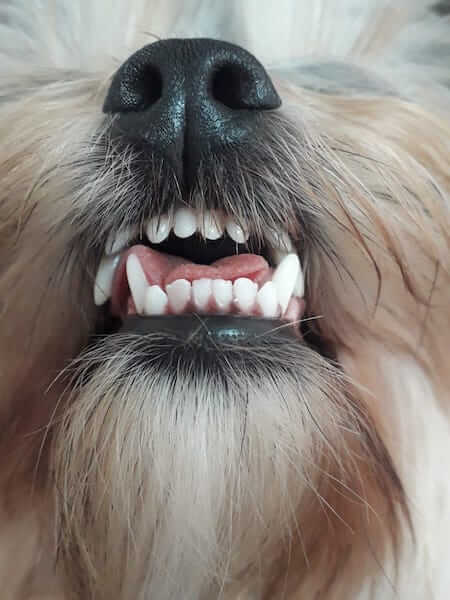
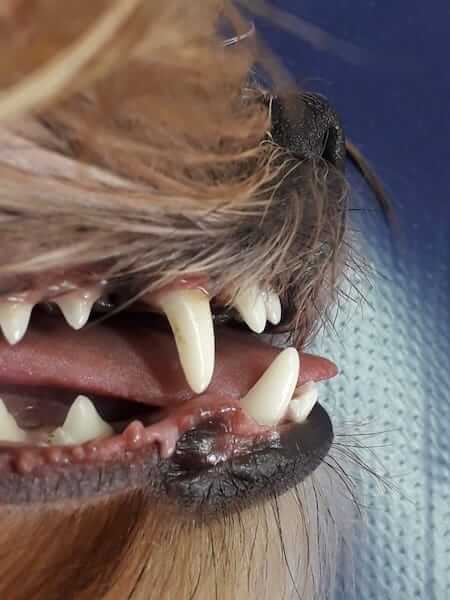
5. Discoloured teeth
Some antibiotics should be avoided in puppies and kittens if their permanent teeth are still embedded in the jaw. These medications can discolour the permanent teeth before they have erupted. It’s not a major concern, but it doesn’t look healthy, and can predispose pets to early tooth decay.
Distemper virus in puppies can cause enamel hypoplasia, where the enamel on their permanent teeth doesn’t develop properly. The enamel is the hard outer layer of a tooth, and if this weakens, the tooth surface becomes irregular. This makes it easier for plaque to stick to the tooth, causing gingivitis and tooth decay.
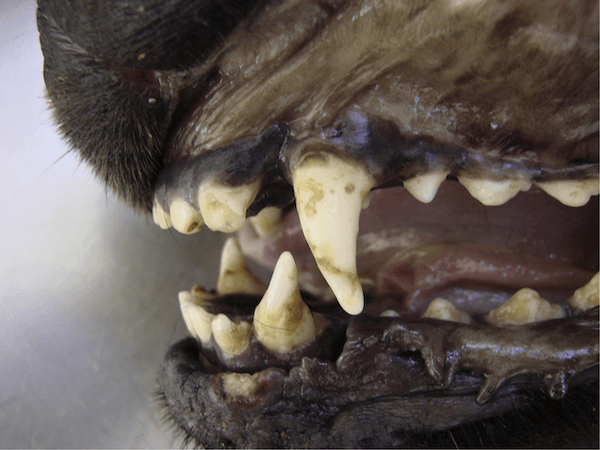
Image: www.sciencedirect.com
Some handy tips
When to book a check-up: just like their human counterparts, puppies and kittens need a dental check-up even before their permanent teeth have appeared. Your vet will examine their mouth, jaw and teeth, from front to back, on both sides. This is standard procedure during a routine vaccination examination, but if things in your puppy or kitten’s mouth just don’t look right to you, don’t hesitate to book an extra dental check-up.
How to prepare pets for dental check-ups: From the moment you adopt a new pet, you can help him or her feel less uneasy about having those teeth checked. When your furry friend is relaxed (and not in a painfully playful mood!) lift his or her upper lip and look at the teeth. If your pet associates this action with a treat, even better. It can turn the dental examination into a pleasant experience for you, your pet, and the vet.
Tooth brushing for baby pets: even though we don’t consider it essential to brush your puppy or kitten’s teeth, tooth brushing is the gold standard when it comes to home dental care for adult pet teeth. During this growing stage, rub a finger gently across those baby teeth to sooth the gums and familiarise you both with the brushing action before it becomes important.
Avoiding medication: your vet will know which drugs to avoid during the growing stages, but it may be wise to check that the medication prescribed will not affect your baby’s teeth.
Care for them now… to avoid issues in the future
So, it turns out that there is more to baby pet teeth than painful gnawing on your sensitive fingers! These sharp precursors of your pet’s dentition need to be looked after. They can cause a number of problems and play an important part in keeping your baby healthy… not only now, but also in the relatively distant future. Our best advice: have them checked regularly.


